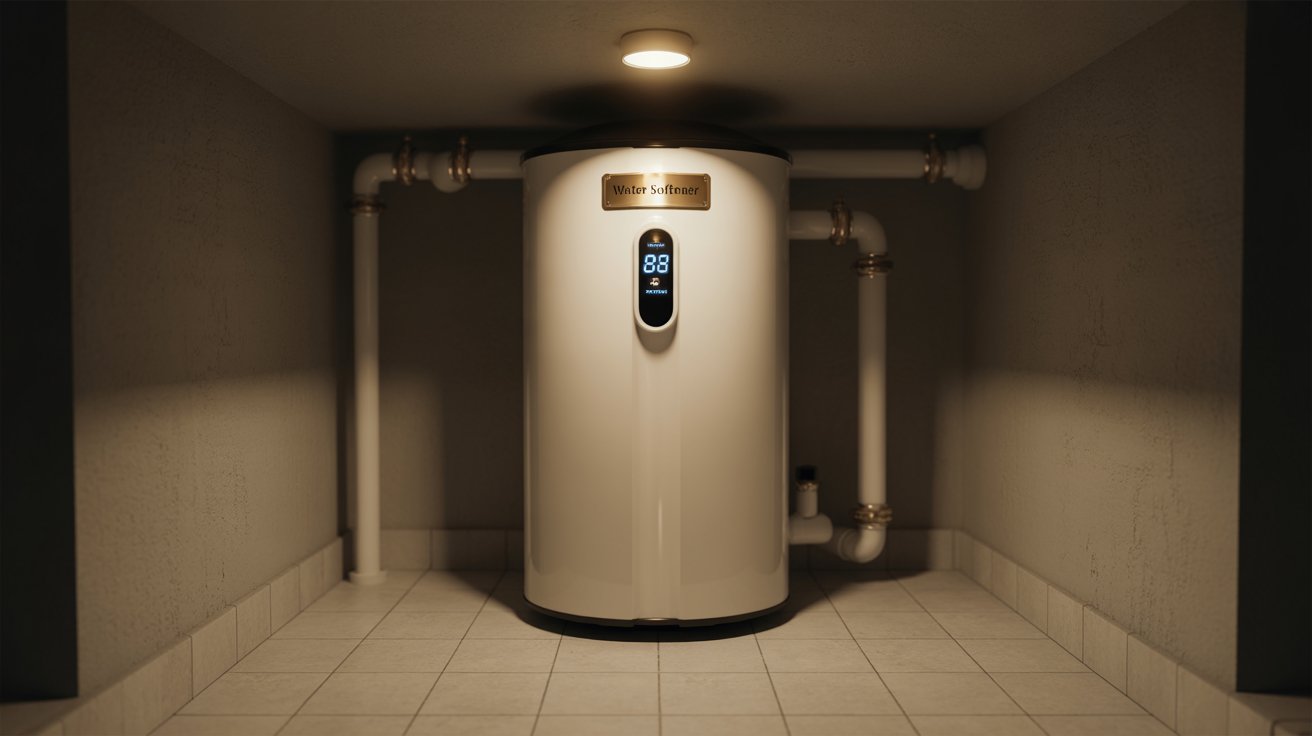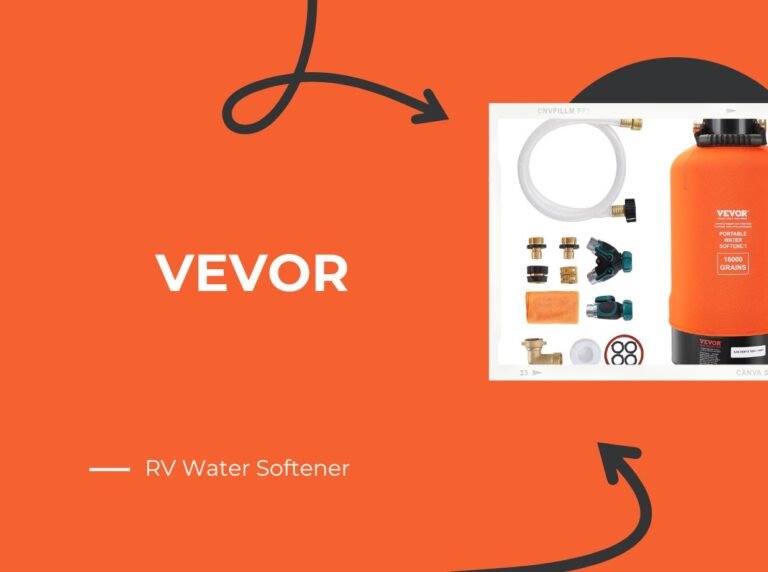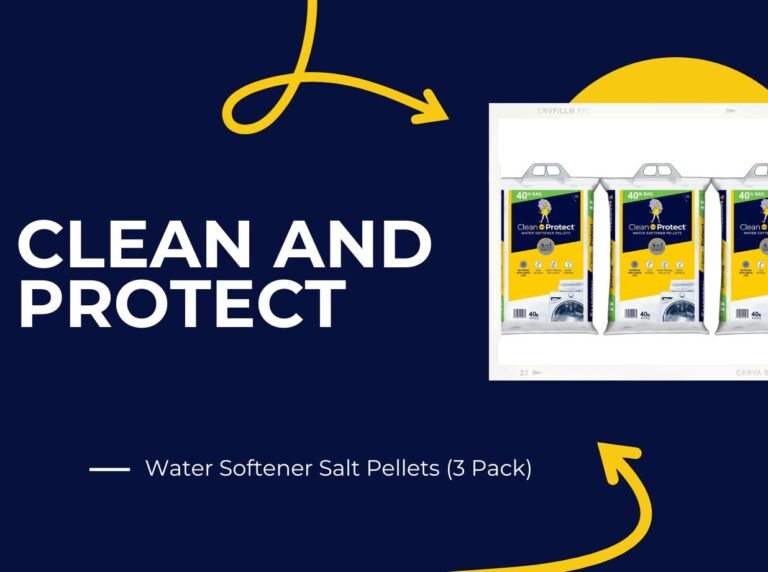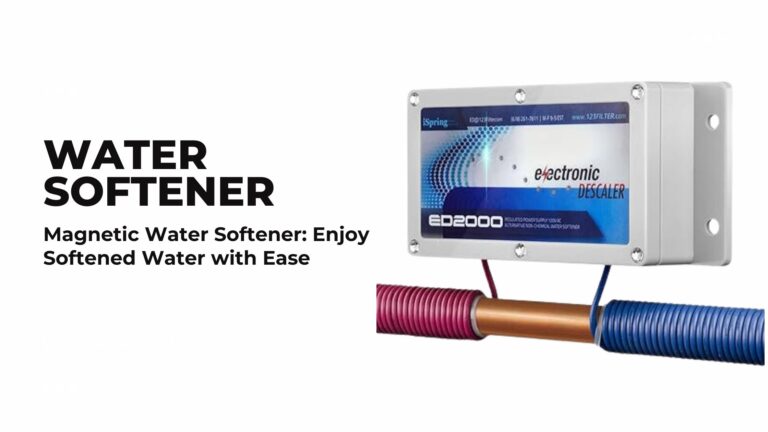Bypass Valve in Home Water Softeners: What You Need to Know
Are you aware of the crucial role a specific component plays in maintaining your home’s water softening system? The bypass valve is a vital part that controls the flow of water into the softening process.
A bypass valve for water softener comes in different forms and changes the flow of your water so it’s not sent into the softening process. This function is essential for various reasons, including maintenance and ensuring the system’s efficiency.
Understanding the bypass valve function can help homeowners manage their water softening systems more effectively. It’s not just about having soft water; it’s about knowing how to maintain the system that provides it.
Key Takeaways
- The bypass valve controls water flow into the softening process.
- It comes in different forms to suit various systems.
- Understanding its function is crucial for system maintenance.
- A properly used bypass valve can enhance system efficiency.
- It’s a vital component for the overall performance of the water softener.
Understanding Water Softener Systems
To appreciate the role of a bypass valve in a water softener, it’s essential to understand the basics of water softening systems. Water softeners are designed to remove minerals that cause water to be hard, primarily calcium and magnesium, by exchanging them with sodium or potassium ions.
How Water Softeners Work
Water softeners operate on the principle of ion exchange. Hard water passes through a resin bed where calcium and magnesium ions are exchanged for sodium or potassium ions, thus softening the water.
Key Components of a Water Softener
The key components include the resin tank, brine tank, control valve, and bypass valve. Each component plays a crucial role in the softening process.
The Role of Valves in Water Treatment
Valves, including the bypass valve, are critical for controlling water flow into and out of the softener. They enable maintenance, regeneration, and emergency bypass operations.
| Component | Function |
|---|---|
| Resin Tank | Holds the resin bed where ion exchange occurs |
| Brine Tank | Stores salt or potassium used for regeneration |
| Control Valve | Regulates water flow and initiates regeneration |
| Bypass Valve | Allows water to bypass the softener for maintenance or emergencies |
What is a Bypass Valve in a Home Water Softener?
The bypass valve plays a vital role in water softener systems by redirecting water flow when needed. This functionality is crucial for both maintenance and emergency situations, ensuring that water supply is not interrupted.
Definition and Basic Function
A bypass valve is a device that changes the direction of water flow to avoid the softening process. Its primary function is to allow water to bypass the softener unit, either partially or completely, depending on the user’s needs.
Location Within the Water Softener System
The bypass valve is typically located near the water pipes connected to the softener unit. This strategic placement enables easy control over water flow into the softener, facilitating maintenance or isolation of the unit as required.
How Bypass Valves Differ from Other Valves
Bypass valves differ from other types of valves in their specific application and functionality. Unlike check valves or shut-off valves, bypass valves are designed to divert water flow around the water softener, offering a unique control mechanism.
Key features of bypass valves include:
- Control over water flow into the softener unit
- Ability to isolate the softener for maintenance
- Emergency shut-off capability
Understanding the role and operation of a bypass valve is essential for homeowners to manage their water softener systems effectively. By knowing how to use the bypass valve, homeowners can ensure continuous water supply, perform necessary maintenance, and handle emergency situations efficiently.
The Importance of Bypass Valves in Water Softening Systems
Bypass valves play a crucial role in water softening systems, and their importance cannot be overstated. They are designed to allow water to bypass the softener during maintenance, emergencies, or when the softener is not in use.
Protecting Your Water Softener During Maintenance
During maintenance, the bypass valve protects the water softener by redirecting water flow, allowing for safe and efficient servicing. This is particularly important when replacing resin or cleaning the system.
Maintaining Continuous Water Supply
A bypass valve ensures that water continues to flow to the household even when the softener is being serviced or is not functioning. This is crucial for households that rely heavily on softened water.
Emergency Situations and Bypass Necessity
In emergency situations, such as a malfunctioning softener or a leak, the bypass valve allows for immediate shutdown and isolation of the softener, preventing further damage.
According to industry experts, “A well-maintained bypass valve is essential for the longevity and efficiency of a water softening system.” The importance of regular checks cannot be emphasized enough.
| Benefits | Description |
|---|---|
| Continuous Water Supply | Ensures water flow during maintenance or softener failure |
| Protection During Maintenance | Redirects water flow for safe servicing |
| Emergency Isolation | Allows for immediate shutdown in case of emergencies |
Proper installation and regular maintenance of the bypass valve are critical. Homeowners should consider consulting professionals for bypass valve installation in a water softener to ensure it’s done correctly.
Different Types of Bypass Valves
Understanding the different types of bypass valves is essential for homeowners to make informed decisions about their water softener systems. Bypass valves are crucial for managing water flow during maintenance, emergencies, or when untreated water is needed.
Standard Bypass Valves
Standard bypass valves are the most common type found in home water softeners. They allow for manual diversion of water flow around the softener, ensuring continuous water supply during maintenance or regeneration cycles. These valves are simple, reliable, and cost-effective, making them a popular choice among homeowners.
Three-Valve Bypass Systems
Three-valve bypass systems offer more flexibility and control over water flow. They consist of three separate valves that can be operated to direct water flow either through the softener, around it, or a combination of both. This system is particularly useful for complex plumbing setups or when specific water treatment requirements need to be met.
Automatic Bypass Valves
Automatic bypass valves represent a more advanced solution, often integrated with electronic controls that automatically divert water flow based on the softener’s operation mode. These valves enhance convenience and reduce the need for manual intervention, ensuring that water treatment is optimized without interrupting the water supply.
Electronic Control Options
Electronic control options for automatic bypass valves allow for precise control over the water softening process. These controls can be programmed to switch between service and bypass modes based on regeneration schedules or water quality parameters.
Manual Override Features
Many automatic bypass valves come equipped with manual override features, enabling homeowners to take control of the water flow when needed. This is particularly useful during emergencies or when maintenance is required.
By understanding the different types of bypass valves available, homeowners can better appreciate the benefits of a bypass valve in a home water softener, including enhanced flexibility, reliability, and efficiency in managing their water treatment systems.
How Bypass Valves Function in Water Softeners
Bypass valves play a critical role in the operation of water softeners, allowing for maintenance and emergency bypass. These valves are designed to control the flow of water through the softener, enabling homeowners to manage water treatment during various operational modes.
Normal Operation Mode
In normal operation mode, the bypass valve directs water through the water softener, allowing it to treat the water before it reaches household faucets. This mode ensures that water is softened and free from minerals that cause scaling.
Bypass Mode Operation
During maintenance or emergencies, the bypass valve can be switched to bypass mode, redirecting water around the softener. This allows for continuous water supply while the softener is being serviced or repaired.
Partial Bypass Settings
Some bypass valves offer partial bypass settings, which allow a portion of the water to continue flowing through the softener while the rest bypasses it. This feature is useful for maintaining some level of water treatment during maintenance.
Water Flow Patterns Through Bypass Systems
The design of the bypass valve influences water flow patterns through the system. Properly configured bypass valves ensure smooth transitions between normal and bypass modes, minimizing disruptions to water supply.
Key aspects of bypass valve functionality include:
- Control over water flow during normal operation
- Ability to bypass the softener during maintenance or emergencies
- Optional partial bypass settings for continued water treatment
- Influence on water flow patterns through the system
Understanding these aspects is crucial for effective bypass valve maintenance and operation.
Step-by-Step Guide: How to Use a Bypass Valve
Understanding how to operate a bypass valve is crucial for maintaining your water softener system effectively. This valve is a critical component that allows you to control the flow of water through your softener, enabling maintenance, repairs, and emergency bypass operations.
Activating Bypass Mode
To activate bypass mode, you may need to turn or push the valve, depending on its type. The process can vary slightly depending on whether you have a manual or automatic bypass valve.
Handle Positions and What They Mean
For manual bypass valves, the handle position typically indicates whether the valve is in service or bypass mode. For instance, a handle that’s parallel to the pipes usually signifies that the water softener is in bypass mode.
Visual Indicators of Bypass Status
Some modern bypass valves come equipped with visual indicators that show whether the system is in bypass mode. These indicators can be lights, flags, or other markers that provide a quick and easy way to check the valve’s status.
| Valve Type | Bypass Mode Indicator | Normal Operation Indicator |
|---|---|---|
| Manual Bypass Valve | Handle parallel to pipes | Handle perpendicular to pipes |
| Automatic Bypass Valve | LED light or flag indicator | No indicator or different LED color |
Returning to Normal Operation
To return to normal operation, simply reverse the steps you took to activate bypass mode. For manual valves, this typically involves turning the handle back to its original position.
Safety Precautions When Operating Bypass Valves
When operating a bypass valve, it’s essential to ensure that you’re not causing any sudden changes in water pressure that could potentially damage your plumbing system. Always check the manufacturer’s instructions for specific guidance on operating your particular bypass valve.
Bypass Valves and Water Pressure Management
Understanding the role of bypass valves in managing water pressure is crucial for homeowners with water softeners. Bypass valves are not just simple on/off controls; they play a significant role in maintaining the overall water pressure within a home’s plumbing system.
How Bypass Valves Affect Home Water Pressure
Bypass valves can significantly impact the water pressure in a home. When a bypass valve is activated, it redirects water flow around the water softener. This redirection can affect the overall pressure, as the water softener and its associated plumbing can be a point of resistance in the water flow.
Pressure Drop Considerations
A key consideration when using bypass valves is the potential for pressure drop. Pressure drop occurs when there’s a reduction in water pressure as water flows through the valve and the water softener system. Factors contributing to pressure drop include the valve’s design, the diameter of the pipes, and the flow rate of the water.
| Factor | Impact on Pressure Drop |
|---|---|
| Valve Design | A well-designed valve minimizes pressure drop. |
| Pipe Diameter | Larger diameters reduce pressure drop. |
| Flow Rate | Higher flow rates can increase pressure drop. |
Optimizing Pressure Through Proper Valve Settings
To optimize water pressure, it’s essential to adjust the bypass valve correctly. Proper settings ensure that water flows efficiently through the system, minimizing pressure drop. Homeowners should consult their water softener’s manual for guidance on adjusting the bypass valve for optimal performance.
By understanding how bypass valves affect water pressure and taking steps to minimize pressure drop, homeowners can ensure their water softening system operates efficiently, providing the best possible water pressure throughout their home.
Installing a Bypass Valve in Your Water Softener
For homeowners with water softeners, understanding how to install a bypass valve is vital for efficient system management. A bypass valve allows for the diversion of water flow around the water softener during maintenance or repairs, ensuring a continuous water supply.
DIY Installation Steps
Installing a bypass valve can be a DIY task if you have the right tools and follow the manufacturer’s instructions. Begin by shutting off the main water supply to your home. Then, locate the inlet and outlet pipes connected to your water softener.
Next, install the bypass valve according to the manufacturer’s guidelines, typically involving the connection of the valve to the inlet and outlet pipes. Ensure all connections are secure to prevent leaks.
When to Call a Professional
If you’re not comfortable with DIY plumbing projects or if your water softener system is complex, it’s advisable to call a professional. A licensed plumber can ensure the bypass valve is installed correctly and safely.
Tools and Materials Needed
| Tool/Material | Description |
|---|---|
| Bypass Valve | Specifically designed for your water softener model |
| Pipe Wrenches | For loosening and tightening pipe fittings |
| Teflon Tape | For creating watertight seals on threaded connections |
Compatibility with Different Water Softener Brands
Most bypass valves are designed to be compatible with a wide range of water softener brands. However, it’s crucial to check the specifications of the bypass valve against your water softener model to ensure compatibility.
Key Considerations: Check the manufacturer’s documentation for both the bypass valve and the water softener to confirm compatibility.

By following these guidelines, homeowners can successfully install a bypass valve in their water softener, enhancing the system’s functionality and their overall water treatment experience.
Bypass Valve Maintenance Tips
Bypass valve maintenance is a critical aspect of water softener upkeep that shouldn’t be overlooked. Regular maintenance ensures the longevity and efficiency of your bypass valve, which is essential for the overall performance of your water softener system.
Regular Inspection Routine
To maintain your bypass valve, start with a regular inspection routine. Check for signs of wear, leaks, or corrosion. Inspect the valve’s handle or actuator to ensure it’s functioning correctly. Regular inspections can help identify potential issues before they become major problems.
Cleaning Procedures
Cleaning your bypass valve periodically is crucial. Use a soft brush to remove any debris or sediment that may have accumulated. For more thorough cleaning, a mixture of water and white vinegar can be effective. Always refer to your manufacturer’s instructions for specific cleaning recommendations.
Preventing Mineral Buildup
Mineral buildup can significantly affect the performance of your bypass valve. To prevent this, consider installing a pre-filter or sediment filter before your water softener. Regularly checking and maintaining the water softener’s resin bed can also help reduce mineral buildup.
Lubrication Requirements
Some bypass valves require lubrication to operate smoothly. Check your valve’s manual to see if lubrication is recommended. If so, use a silicone-based lubricant to keep the valve’s moving parts well-lubricated.
| Maintenance Task | Frequency | Notes |
|---|---|---|
| Inspect Bypass Valve | Monthly | Check for wear, leaks, or corrosion |
| Clean Bypass Valve | Quarterly | Use soft brush and vinegar solution |
| Lubricate Valve (if necessary) | As needed | Use silicone-based lubricant |
By following these bypass valve maintenance tips, you can ensure your water softener system operates efficiently and effectively, providing you with high-quality softened water for years to come.
Troubleshooting Common Bypass Valve Issues
Troubleshooting bypass valve issues is crucial for maintaining the efficiency of your water softener system. Bypass valves are essential for redirecting water flow during maintenance or emergencies, but like any mechanical component, they can develop problems.
Leaking Bypass Valves
Leaks are a common issue with bypass valves, often resulting from worn-out seals or improper installation. To diagnose a leak, inspect the valve for signs of moisture or water droplets. Tightening the valve or replacing the seals can usually resolve the issue.
Stuck or Difficult-to-Turn Valves
Stiffness in bypass valves can be caused by mineral buildup or corrosion. Regular maintenance, such as lubrication and cleaning, can prevent this issue. If the valve is stuck, applying a penetrating lubricant and gently manipulating the valve can help restore its operation.
Water Quality Issues Related to Bypass Problems
Bypass valve malfunctions can lead to water quality issues, such as hard water bypassing the softener. Check the valve’s position and ensure it’s fully in the ‘service’ or ‘bypass’ mode as needed. Regularly testing the water quality can help identify issues related to the bypass valve.
Diagnosing bypass valve issues requires a systematic approach. Start by checking the valve’s operation and inspecting for signs of wear or damage. Refer to the manufacturer’s instructions for specific troubleshooting guides.
- Check for leaks around the valve
- Inspect the valve for mineral buildup
- Ensure the valve is properly positioned
By following these steps, you can identify and resolve common bypass valve issues, ensuring your water softener operates efficiently.
When to Replace Your Water Softener Bypass Valve
Understanding when to replace your water softener bypass valve is crucial for maintaining the overall efficiency of your water softening system. The bypass valve plays a significant role in directing water flow through or around the softener, and its failure can lead to reduced system performance or even complete system failure.
Signs of Bypass Valve Failure
Several indicators suggest that your bypass valve may need replacement. These include:
- Leaks around the valve
- Difficulty in turning the valve handle
- Water pressure issues
- Visible signs of wear or corrosion
If you notice any of these signs, it’s essential to inspect your bypass valve closely. A faulty bypass valve can lead to decreased water quality and increased maintenance costs.
Typical Lifespan of Bypass Valves
The lifespan of a bypass valve can vary based on usage, water quality, and maintenance. Typically, a well-maintained bypass valve can last between 5 to 10 years. However, in areas with hard water or high mineral content, the lifespan may be shorter due to increased wear and tear.
| Factors Affecting Lifespan | Impact on Bypass Valve |
|---|---|
| Water Quality | Hard water or high mineral content can reduce lifespan |
| Usage | Higher usage can lead to faster wear |
| Maintenance | Regular maintenance can extend lifespan |
Replacement Options and Costs
When replacing your bypass valve, you have several options to consider. You can choose between manual and automatic valves, with the latter offering more convenience but at a higher cost. The cost of replacement valves can range from $50 to $200, depending on the type and brand.
“Investing in a high-quality bypass valve can significantly improve the efficiency and longevity of your water softening system.” – Water Treatment Expert
Upgrading to More Advanced Bypass Systems
If you’re considering upgrading your bypass system, look for features like automatic operation, durable materials, and compatibility with your existing water softener. Advanced bypass systems can offer improved performance and reduced maintenance needs.
By understanding the signs of bypass valve failure and knowing when to replace it, you can ensure your water softener operates efficiently and effectively. Regular maintenance and timely replacements are key to maximizing the benefits of your water softening system.
Conclusion
Properly maintaining your water softener’s bypass valve is essential for ensuring the longevity and efficiency of your water treatment system. By understanding the role of bypass valves and following bypass valve maintenance tips, you can prevent issues and guarantee a continuous supply of softened water.
Regular inspection and cleaning of the bypass valve are crucial to prevent mineral buildup and maintain optimal performance. By incorporating these simple maintenance tasks into your routine, you can extend the lifespan of your water softener and enjoy the benefits of softened water for years to come.
By following the guidelines outlined in this article, you can optimize your water softener’s performance and ensure that your bypass valve operates smoothly. Effective bypass valve maintenance is key to a well-functioning water softener system.
Frequently Asked Questions
What is the primary function of a bypass valve in a home water softener?
The primary function of a bypass valve is to allow water to bypass the water softener, enabling continuous water supply during maintenance, repairs, or in emergency situations.
How does a bypass valve differ from other types of valves in a water softener system?
A bypass valve is designed to divert water around the softener, whereas other valves control water flow into, out of, or within the softener. Bypass valves are typically used for maintenance or emergency purposes.
What are the different types of bypass valves available for home water softeners?
Common types include standard bypass valves, three-valve bypass systems, and automatic bypass valves, each offering different characteristics and operational methods to suit various needs.
How do I activate bypass mode on my water softener?
To activate bypass mode, typically, you need to turn the bypass valve handle to the “bypass” position. The exact procedure may vary depending on the valve type and brand.
Can a bypass valve affect my home’s water pressure?
Yes, a bypass valve can impact water pressure. Proper settings and maintenance are crucial to optimize pressure. A partially closed or clogged bypass valve can cause pressure drops.
How often should I inspect and maintain my bypass valve?
Regular inspection is recommended at least every 6 months. Maintenance includes cleaning, checking for mineral buildup, and lubricating the valve as needed.
What are the signs that indicate my bypass valve needs replacement?
Signs include leaks, difficulty turning the handle, water quality issues, or visible wear and tear. The typical lifespan varies, but most bypass valves last between 5 to 10 years.
Can I install a bypass valve myself, or do I need a professional?
While DIY installation is possible, it’s recommended to seek professional help if you’re unsure about compatibility, plumbing, or the installation process.
Are there any safety precautions I should take when operating a bypass valve?
Yes, ensure you understand the valve’s operation, and always turn off the power to the softener before performing maintenance. Be cautious of water pressure and potential leaks.







